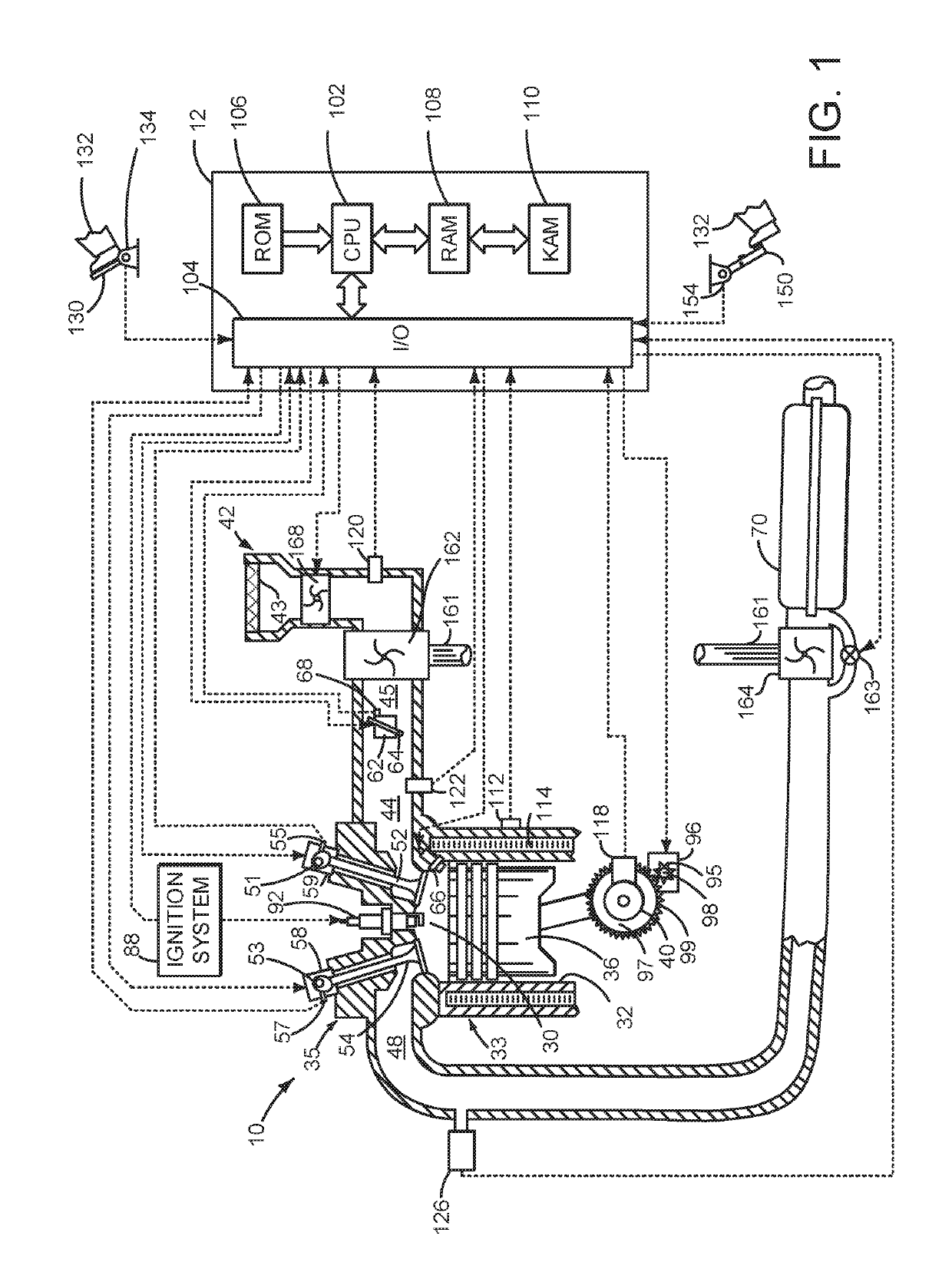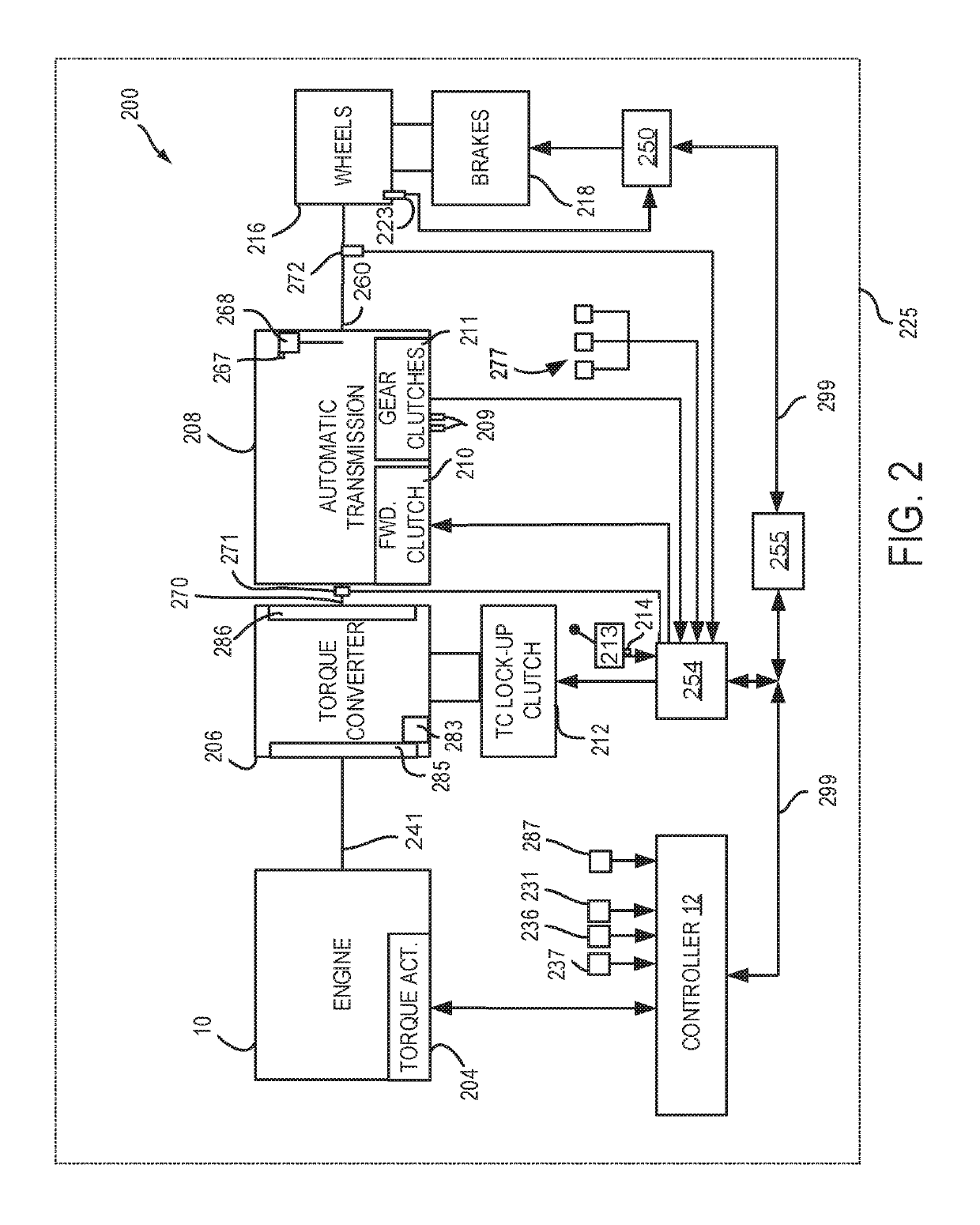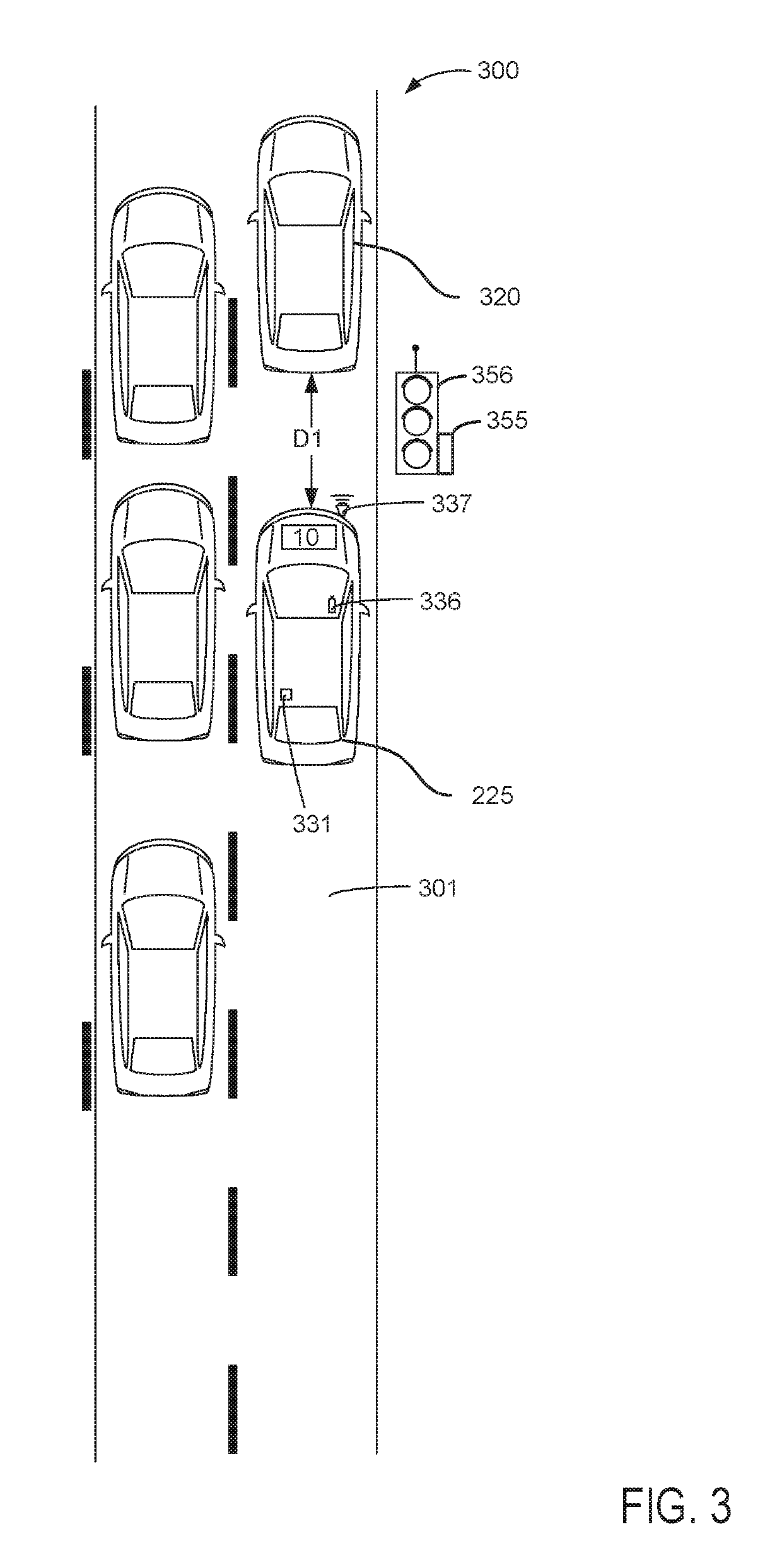Automatic engine stopping and starting for a parked vehicle
a technology of automatic starting and parked vehicles, applied in the direction of engine starters, combustion engines, electric motor starters, etc., can solve the problems of reducing the amount of time between vehicles, and all gear clutches may have to be released, so as to reduce the amount of time it takes to accelerate the speed and accelerate the speed
- Summary
- Abstract
- Description
- Claims
- Application Information
AI Technical Summary
Benefits of technology
Problems solved by technology
Method used
Image
Examples
Embodiment Construction
[0014]The present description is related to controlling an engine that may be automatically stopped and started to conserve fuel. The internal combustion engine may be configured as shown in FIG. 1. The internal combustion engine may be included in a driveline or powertrain of a vehicle as shown in FIG. 2. The engine and powertrain may be included in a vehicle as is shown in FIG. 3. The engine may be automatically stopped and started as is shown in the sequences of FIGS. 4A-4H. The engine may be automatically stopped and started according to the method of FIGS. 5-8.
[0015]Referring to FIG. 1, internal combustion engine 10, comprising a plurality of cylinders, one cylinder of which is shown in FIG. 1, is controlled by electronic engine controller 12. The controller 12 receives signals from the various sensors of FIG. 1 and employs the various actuators of FIG. 2 to adjust engine operation based on the received signals and instructions stored in controller memory. For example, controll...
PUM
 Login to View More
Login to View More Abstract
Description
Claims
Application Information
 Login to View More
Login to View More - R&D
- Intellectual Property
- Life Sciences
- Materials
- Tech Scout
- Unparalleled Data Quality
- Higher Quality Content
- 60% Fewer Hallucinations
Browse by: Latest US Patents, China's latest patents, Technical Efficacy Thesaurus, Application Domain, Technology Topic, Popular Technical Reports.
© 2025 PatSnap. All rights reserved.Legal|Privacy policy|Modern Slavery Act Transparency Statement|Sitemap|About US| Contact US: help@patsnap.com



